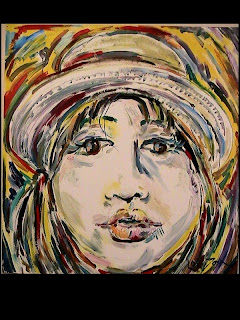Style (n.) \stī(-ə)l\
a : a distinctive manner of expression (as in writing or speech)
b : a distinctive manner or custom of behaving or conducting oneself
Webster’s Dictionary – http://www.merriam-webster.com/dictionary/style
Art always begins as a passion and becomes an idea (or vice versa); the concept must then be systematically translated (through physical exertion) visually in order for it to be communicable to the outside world. The paradox lies in this innate, singular display of expression that holds infinite possibilities for humankind to communicate with each other. The artist LORD TOPH and his new style, “Empathicism” creates a realm of art that reaches out to us and directly communicates with our emotions.
In Empathicism, passion erects as a specific emotion manifesting the art; the subject, color, and even size is not bound to any guidelines or barriers. It is thoroughly defined by the chosen emotion for the piece. It is clear that such properties as size and color have a specific psychological effect on the human mind; red possessing the positive essence of strength or stimulation; blue possessing intelligence and even serenity. There are too many psychological facets of various colors, both positive and negative to mention. Thankfully, color (or the absence of) is one of many facets to play a large part in emotional connection being conveyed in Empathicism.

The Innocence of a Child
4’ x 4’
Oil on canvas board
Positive and negative space is balanced by symmetrical scale and vibrant colors. The essence of the painting is drawn out by the primary colors of red (warmth, energy), blue (calming and trusting), and yellow (friendliness and optimism).
Secondary colors such as greens, oranges, and deep violets, accomodate the primaries showing balance, security, and even truth. The child’s absence of color (with the exception of her hair, eyes and lips), represents purity and innocence.
The child’s face is completely round, portraying balance, and perhaps the preservation of the soul. The expression of the child cannot be determined as positive or negative. Children are initially innocent and malleable for their future experiences with those they encounter, in their life ahead.
LORD TOPH captures the essence of the painting through scale (balance & symmetry), choice of color (life & vitality), absence of color (innocence & purity), stroke (bold & passionate)and subject (impression & truth).This conscious entitlement, defines the piece altogether: "The Innocence of a Child."
All of these things we see in this painting, are the intricacies that we unconsciously connect with every day. Empathicism is explained in writing, to give further insight into what is certain to become a poignant and very captivating style, in the world of fine art.
LORD TOPH has married the emotional and visual that allows art, like humanity,
to speak for itself.
visit LORD TOPH at artreview.com and lordtophart.com
follow LORD TOPH on twitter to get daily updates on his creative process
No comments:
Post a Comment